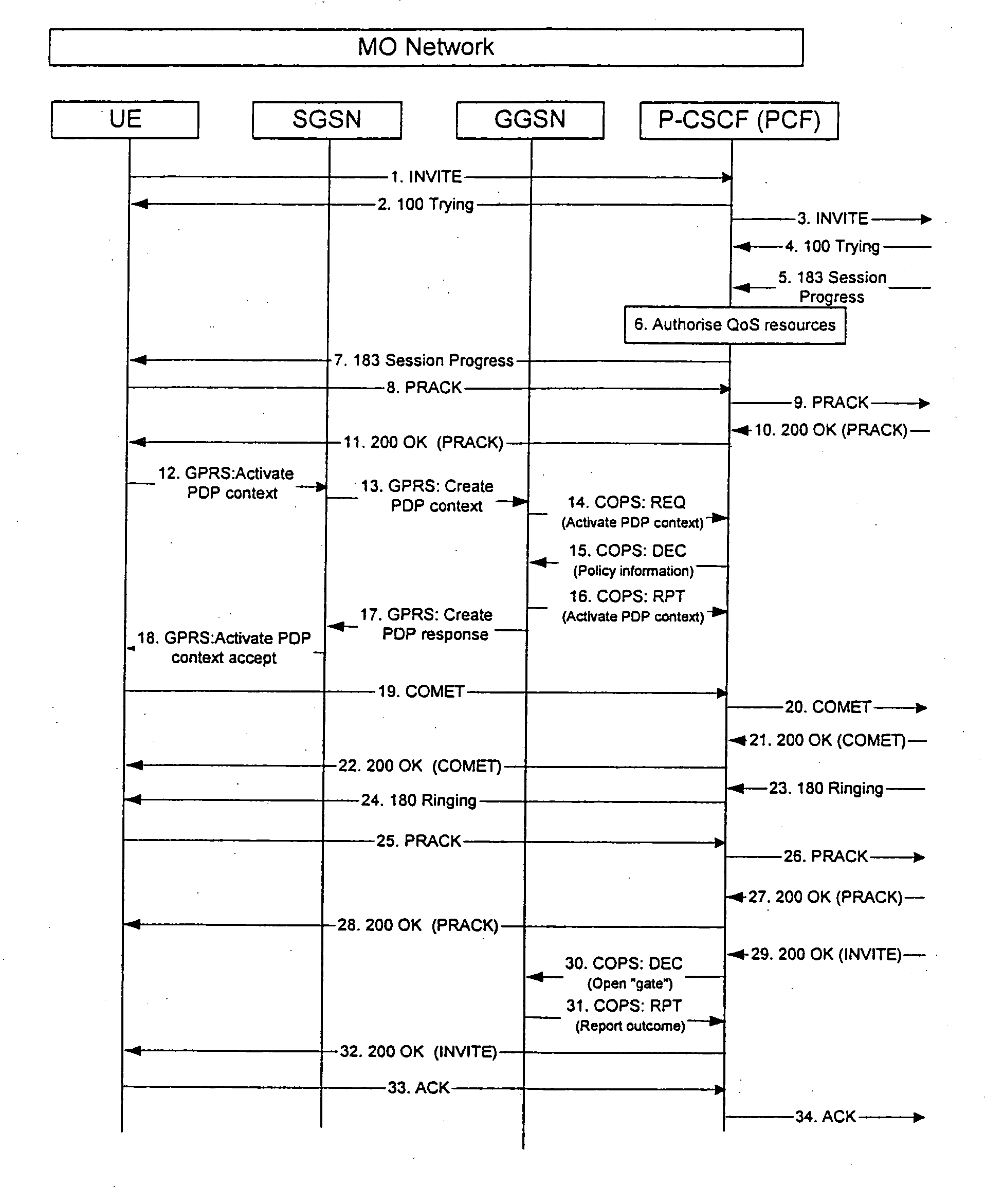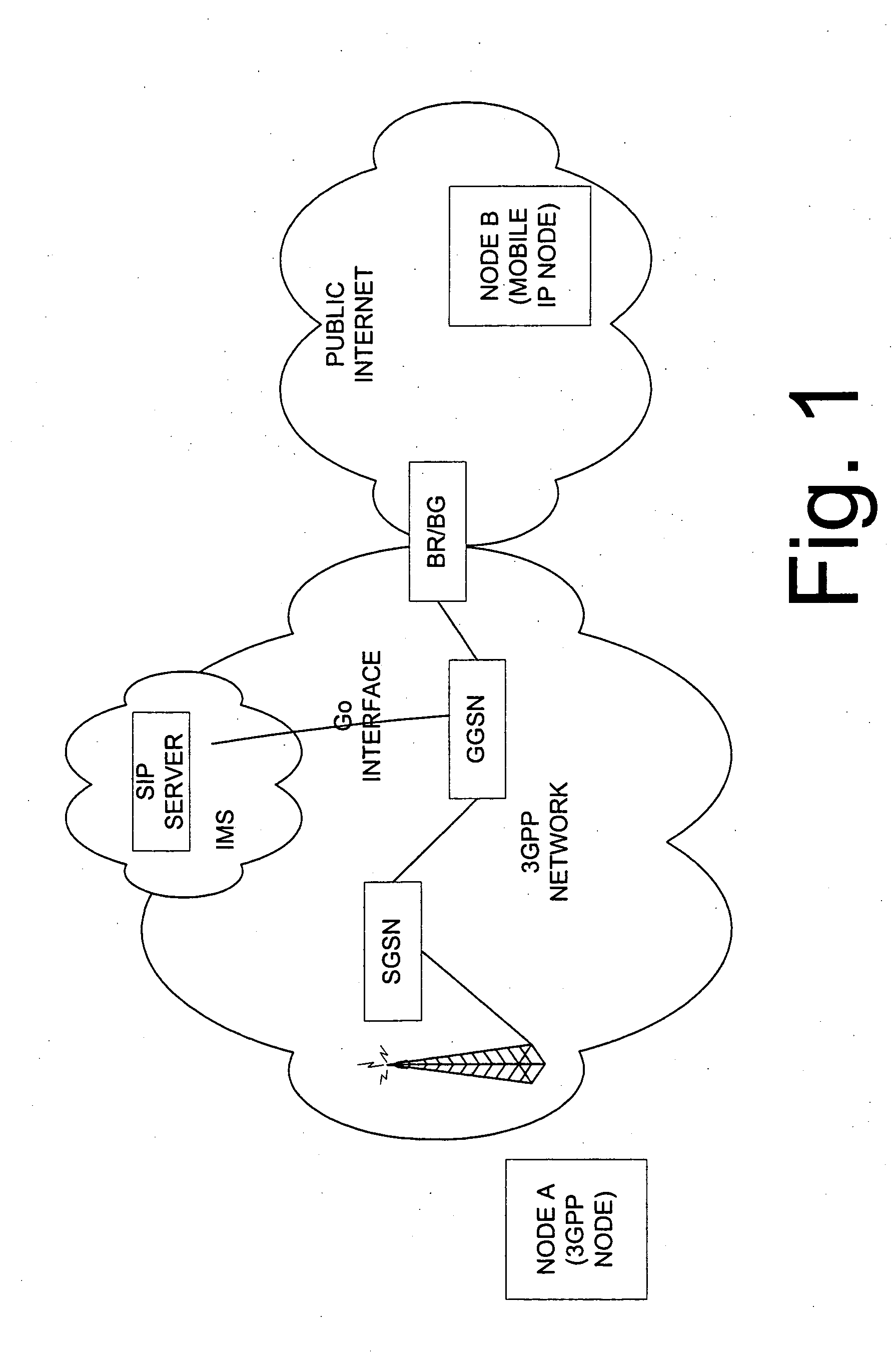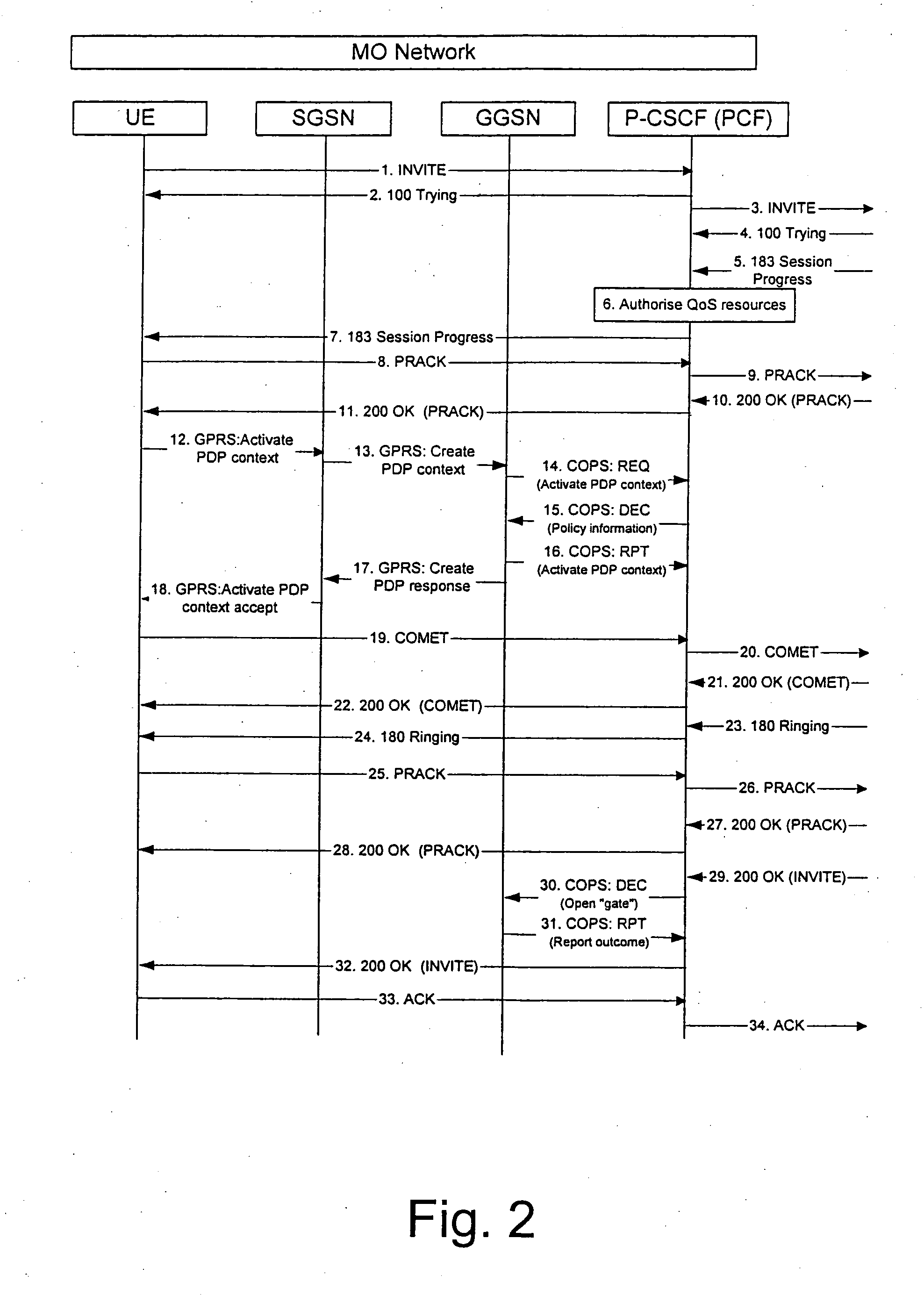Method to support mobile IP mobility in 3GPP networks with SIP established communications
- Summary
- Abstract
- Description
- Claims
- Application Information
AI Technical Summary
Benefits of technology
Problems solved by technology
Method used
Image
Examples
first embodiment
[0119] In general, upon receiving a Binding update from the PN (i.e., the Mobile IP node), the UE will update the packet filters in the packet filtering network element (e.g. GGSN) with the new Care of address of the PN.
[0120] The general relationship between the UE, the PN and a packet filtering network element (a filtering node) is illustrated in FIG. 3A. The normal packet flow is illustrated by the dotted arrows (i.e., the packet flow between PN 33 and UE 32 controlled by the packet filtering network element 32), and a binding update (BU) sent by the PN to the UE and then forwarded from the UE to the packet filtering network element is illustrated by a solid arrow. The packet filtering network element is included in the GGSN according to the present embodiment. However, alternatively the packet filtering network element may be included in a PDSN, or may be a stand-alone network device (e.g., a firewall).
[0121] In the following, a basic procedure according to the first embodimen...
second embodiment
[0129] That is, basically the same situation as illustrated in FIG. 3A is present. Namely, the PN is a mobile IPv6 node and changes its address, and the UE is a 3GPP node.
[0130] According to the second embodiment, extension fields are added to the packet filters and also to the packets. As will be described in the following, the extension fields may comprise a Home Address Option field or a Routing Header type 2 field. The source and / or destination address of packet filters are updated based upon information carried in the extension fields. Upon filtering, also the information in the extension fields is compared.
[0131] In the following, the downlink case is described.
[0132] In detail, upon receiving the update from the UE, the packet filtering network element extends the packet filters to also include a Home Address Option field (downlink packet filters) and the Routing Header type 2 field (uplink packet filters, if any) in addition to the source and destination IP addresses curr...
third embodiment
[0160] In the following, the invention is described.
[0161] The principle situation according to the third embodiment is similar to that according to the first and second embodiment. That is, a connection between a UE and a PN is supported by a packet filtering function, but according to the third embodiment, the UE is able to change its IP address. In the following, a different way to modify the packet filters is described.
[0162] According to the third embodiment, an enhancement to the PDP context activation procedure and the GGSN behavior in 3GPP networks in order to support Mobile IPv6 mobility for SIP services is defined.
[0163] The procedures to be executed are described so that packet filters installed via the Go-interface allow support for Mobile IP based communications.
[0164] According to the third embodiment, it is assumed that the UE moves and changes its address from its HoA to CoA. Once UE's address changed, it initiates a BU with HA and then a BU with PN. Before the BU...
PUM
 Login to View More
Login to View More Abstract
Description
Claims
Application Information
 Login to View More
Login to View More - R&D
- Intellectual Property
- Life Sciences
- Materials
- Tech Scout
- Unparalleled Data Quality
- Higher Quality Content
- 60% Fewer Hallucinations
Browse by: Latest US Patents, China's latest patents, Technical Efficacy Thesaurus, Application Domain, Technology Topic, Popular Technical Reports.
© 2025 PatSnap. All rights reserved.Legal|Privacy policy|Modern Slavery Act Transparency Statement|Sitemap|About US| Contact US: help@patsnap.com



